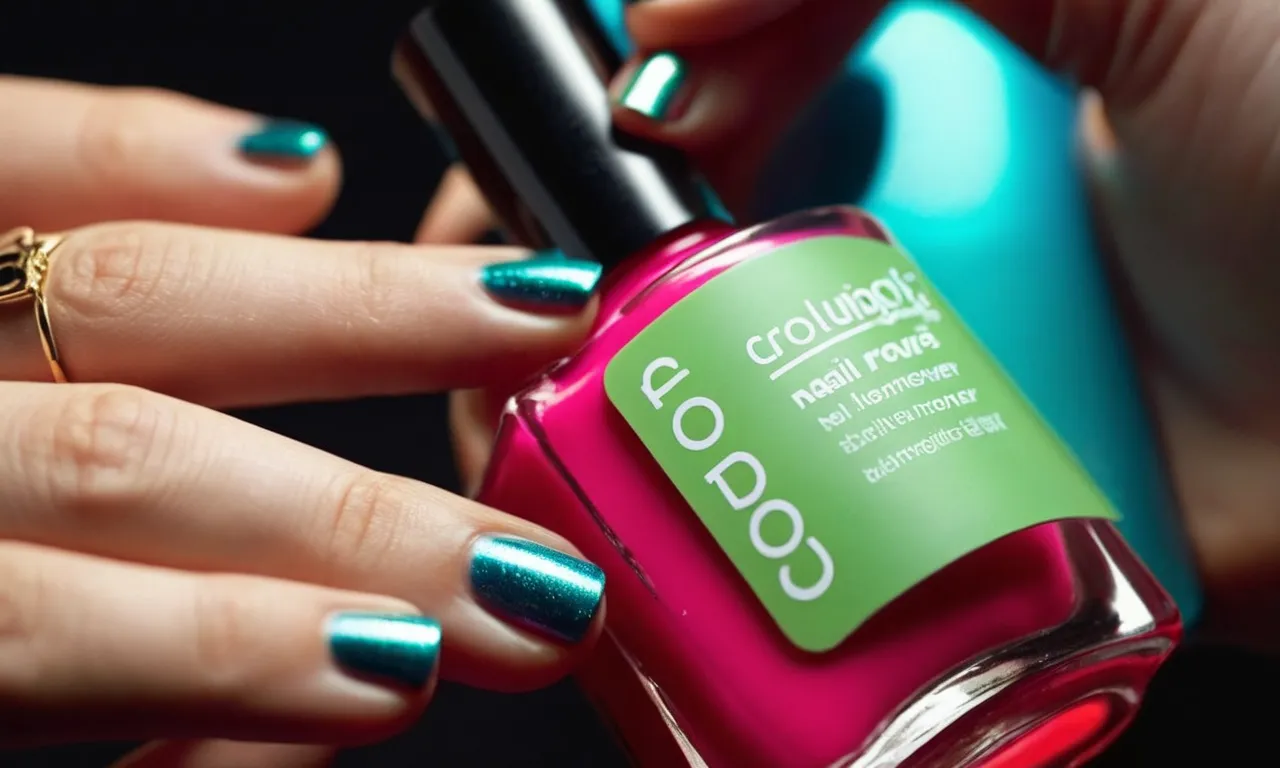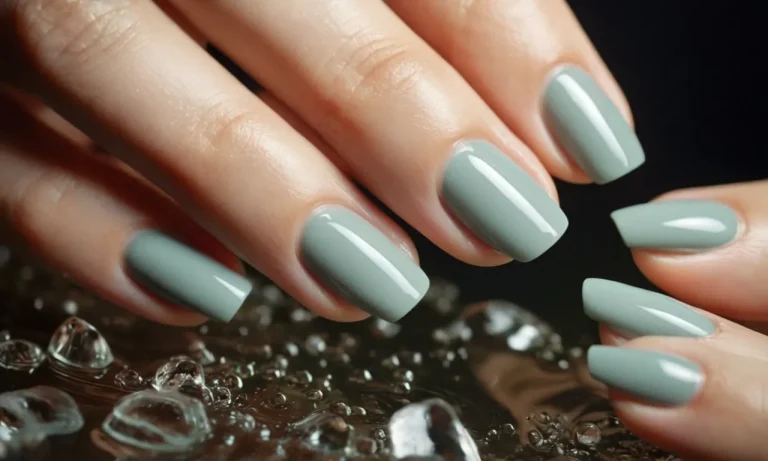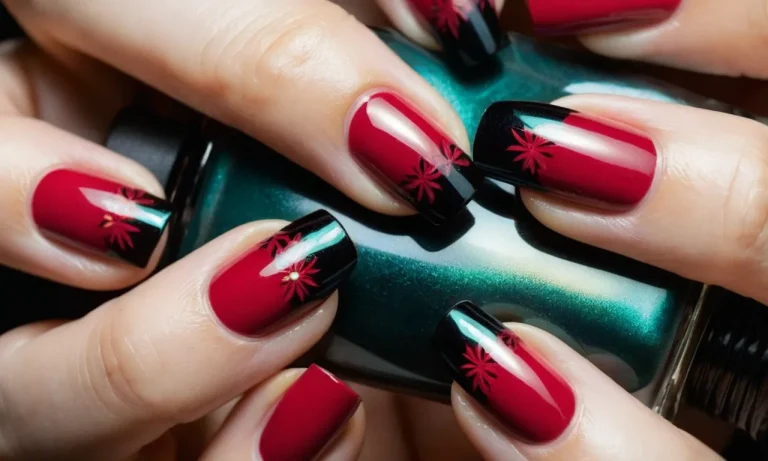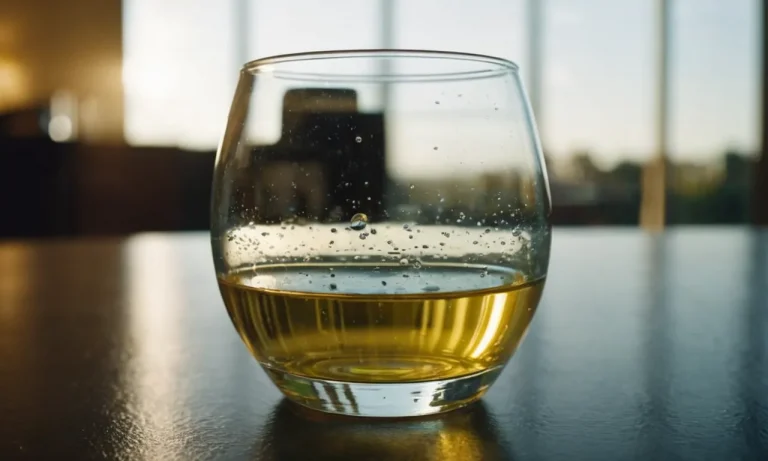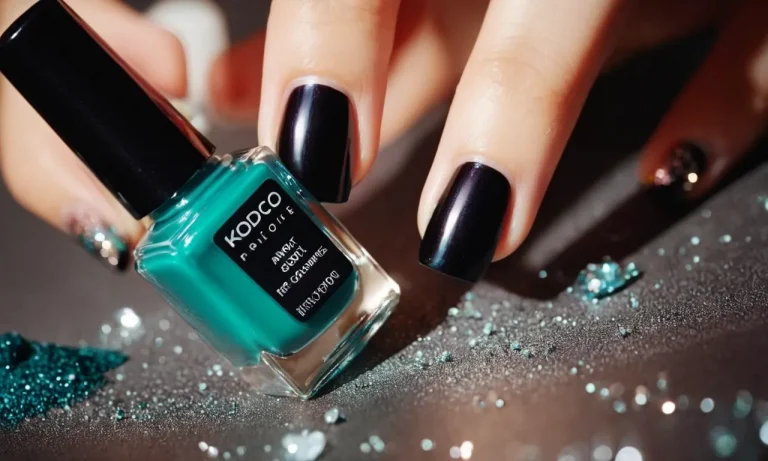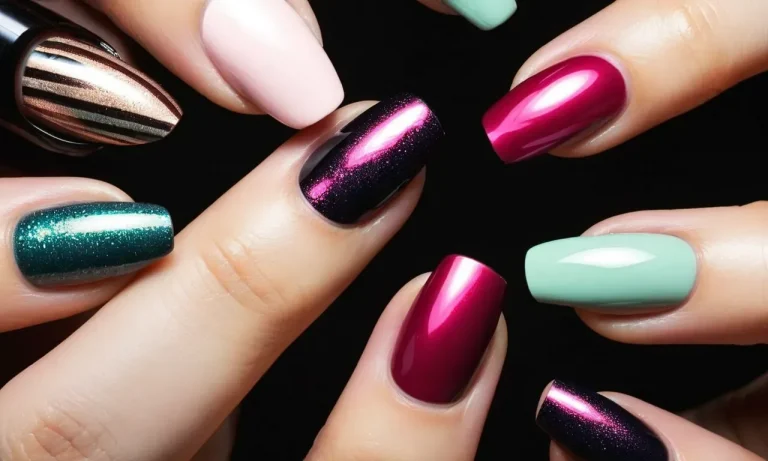Can Nail Polish Get You High? The Truth Behind The Rumor
Nail polish and getting high are rarely associated with one another. However, some alarming headlines over the years have left many readers wondering – can simply painting your nails cause intoxicating effects similar to drug or alcohol use?
Let’s carefully break down the facts behind this urban myth.
If you’re short on time, here is the quick answer: There is no conclusive evidence showing nail polish itself causes users to feel high or experience psychoactive effects like those caused by drug use.
However, many nail polishes contain solvents that should still be used cautiously in well-ventilated areas.
Analyzing Nail Polish Ingredient Safety
Understanding Nail Polish Solvents and Plasticizers
Nail polishes contain solvents like ethyl acetate, butyl acetate, and nitrocellulose to keep the polish flowing and quick-drying. These ingredients can cause headaches, dizziness, and irritation when inhaled in large amounts or over long periods of time. Proper ventilation is key!
Plasticizers like dibutyl phthalate (DBP), toluene, and formaldehyde are sometimes added to improve flexibility and durability. There have been concerns about their safety with long-term exposure, so many brands now advertise being “3-free” or “5-free” to indicate they exclude these.
Why Proper Ventilation Matters
Applying nail polish in small, enclosed spaces with poor airflow can allow the solvent vapors to accumulate to higher levels. Over time, this concentration could potentially cause negative health effects like headaches or dizziness in some people.
Painting nails outdoors or in a well-ventilated area dilutes the vapor concentration, making it less likely to reach levels that could cause issues. Many salons have installed special ventilation systems for this reason.
The EPA recommends proper ventilation when using any household chemical like nail polish. So be sure to open a window – fresh air is free and keeps the risk low!
The Origins Behind the Rumor
Conflating Dizziness with Intoxication
The belief that nail polish fumes can cause intoxication likely started from people conflating the dizziness that strong fume exposure can cause with actually getting high. Breathing in powerful solvents and chemicals like those found in nail polish and nail polish remover for extended periods in poorly ventilated areas can make some people feel temporarily lightheaded or dizzy.
However, this is not the same as the euphoric sensation caused by drug or alcohol intoxication.
According to Dr. Carlton Erickson, director of the Texas A&M Center for Addiction Research, “The amount of inhalants and solvents needed to achieve intoxication far exceeds what you would realistically be exposed to from nail polish.”
While breathing nail polish fumes constantly may cause headaches or nausea in some sensitive people, true intoxicating effects are very unlikely.
Issues Caused by Specific Ingredients (Now Banned)
In the past, particular chemicals that were once used in nail polish posed more health risks and may have contributed to the misconception that nail polish fumes can get you high.
For example, products containing the plasticizers dibutyl phthalate (DBP), toluene, and formaldehyde used to be more common. Research found associations between high, frequent exposure to these chemicals and issues like headaches, dizziness, and nausea.
However, major nail polish brands reformulated their products years ago to remove these controversial ingredients. So most mainstream modern polishes no longer contain chemicals like DBP or toluene. Now, the fumes given off are much less likely to cause adverse health effects unless exposure in an enclosed space is extremely prolonged.
Brands like OPI, Sally Hansen, and Essie have pledged to not include over 10 types of controversial chemicals frequently associated with health issues in their nail polishes. So with safer formulations now the norm, the concept of getting “high” on nail polish fumes holds even less weight.
According to dermatologist Dr. Shari Lipner, “Nail polish formulas today pale in toxicity compared to those used decades ago thanks to consumer demand for safer cosmetic ingredients.” The American Council on Science and Health also stated that the modern notion that smelling nail polish fumes can intoxicate people is just an urban legend.
The Dangers of Inhaling Concentrated Fumes
Inhaling concentrated fumes from nail polish or other chemical solutions can be extremely dangerous. When inhaled in high concentrations, the fumes can cause dizziness, loss of coordination, and even unconsciousness.
Toxic Ingredients
Many nail polishes and nail polish removers contain hazardous ingredients like acetone, formaldehyde, and toluene. When inhaled directly, these chemicals enter the bloodstream quickly and can cause:
- Headaches
- Nausea and vomiting
- Dizziness and loss of coordination
- Confusion and impaired judgment
- Unconsciousness
Inhaling solvents like acetone and toluene at high concentrations essentially makes someone drunk or intoxicated. This leads some people to wrongly assume that “huffing” nail polish fumes can cause a harmless high.
Long-Term Effects
In addition to acute effects like dizziness and passing out, repeatedly inhaling nail product fumes can cause severe long-term damage such as:
- Liver and kidney damage
- Brain damage, personality changes, and loss of coordination from toluene abuse syndrome
- Increased risk of cancer
- Death from respiratory arrest or lack of oxygen to the brain
| Substance | Dangers When Inhaled |
|---|---|
| Acetone (common in nail polish removers) | Nausea, vomiting, impaired coordination, slurred speech, confusion, unconsciousness |
| Toluene (common in nail polishes) | Euphoria, impaired coordination, brain damage with repeated abuse |
| Formaldehyde (sometimes added to nail hardeners) | Coughing, breathing difficulty, asthma attacks |
Simply put, intentionally inhaling fumes from nail care products to get high is extremely dangerous and can even be fatal. While a fleeting buzz may occur, the risk of long-term harm makes it definitively not worth it.
If you or someone you know has issues with inhaling chemical fumes from nail polish or other substances, seek professional addiction treatment immediately. With early intervention and supportive care, recovery is absolutely possible.
Using Nail Polish Safely
Nail polish is a popular beauty product used by many to add color and decoration to fingernails and toenails. While nail polish can be a fun way to express oneself, it’s important to use it safely. Here are some tips for using nail polish safely:
Choose Safer Nail Polish Brands
When selecting nail polish, look for brands labeled as “3-free” or “5-free.” This means the polish does not contain 3 or 5 of the most harmful chemicals found in traditional nail polishes, such as formaldehyde, toluene, and dibutyl phthalate (DBP).
Brands like Essie, OPI, and Sally Hansen offer extensive 3-free and 5-free nail polish lines.
Avoid “Trippy” and Odd-Smelling Polishes
Some novelty nail polishes claim to create a “high” or “trippy” effect. These should be avoided, as they likely contain unsafe levels of inhaled substances like toluene. Also be wary of any polishes that have an unusually strong or chemical-like odor, which could indicate the presence of volatile organic compounds.
Use Properly Ventilated Spaces
Always apply nail polish in well-ventilated areas. Avoid small enclosed spaces like bathrooms. Open windows and use fans to circulate fresh air. This helps prevent inhaling too many fumes while polishing nails.
Limit Exposure Time
Try to polish nails quickly and let them dry as fast as possible. The less time you’re exposed to open nail polish and fumes, the better. Use quick-dry top coats to cut down on drying time. Also consider taking breaks while polishing multiple fingers/toes to go breathe fresh air.
Remove Polish Properly
Use pure acetone nail polish remover and avoid removers with added fragrances or chemicals. Soak cotton balls and remove polish quickly. Follow up with a nourishing nail oil or cuticle cream after removing old polish to condition nails.
Avoid Nail Salon Risks
At nail salons, make sure proper ventilation is in place. Ask to sit near windows or fans. Consider wearing a face mask – salon air often carries traces of dust and chemicals. Opt for “greener” salons that use 3/5-free polishes and ventilate properly.
With some smart precautions, you can enjoy beautiful, colorful nails safely. Always be aware of ventilation and fume buildup. Look for safer polish formulas, apply quickly, and remove properly. Your nails will look fabulously polished without any risky side effects!
Conclusion
While wearing nail polish itself won’t cause intoxicating psychoactive side effects like illicit drug use, taking proper safety precautions when using solvent-based polishes is still important for your health.
Avoid continual exposure to concentrated fumes, work in well-ventilated areas, and check ingredient labels for banned chemicals to minimize risks of lightheadedness or other adverse reactions.

